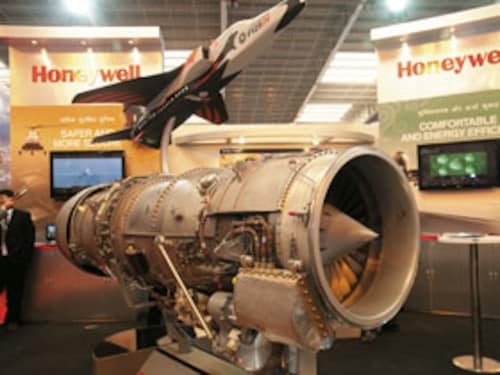Catching the Slipstream - The Defence Offsets Scene in India
‘Offsets’ are a good way to nurture India’s defence manufacturing strength. When they begin to work


There was a pervasive buzz at the Aero-India airshow in Bangalore. It was about the defence dividend — the expected boom in aerospace manufacturing in India from offsets, where a foreign original equipment manufacturer (OEM) is required to spend at least 30 percent of the value of large contracts on parts, equipment and services in India.
The Defence Procurement Policy (DPP) 2011 released in January this year expanded the scope of offsets to include homeland defence and civil aviation equipment in its list of direct offsets.
Boeing, the world’s second-largest aerospace company, says India could potentially be the largest market for its defence business outside of the USA. It estimates India’s purchases to be worth about $31 billion over the next decade. This puts the offset potential at close to $10 billion.
However, the potential from offsets has existed for a while now, but as Group Captain (Retd.) Sanjiv Aggarwal says in his book, Defence Offsets Unscrambled, for all the noise, very few actual offsets have been signed with Indian companies in the private sector. Dozens of joint ventures have been inked but less than $10 million of foreign direct investment (FDI) has come in so far.
Meanwhile, the broadening of the scope of offsets has not gone down well with the Indian industry. The original purpose of having offsets was to help develop India’s defence capabilities. But, as L&T board member and president, heavy engineering, M.V. Kotwal says, the policy is disappointing because it allows a lot of civil equipment as offset work.
There is an increasing demand from Indian companies for technology co-creation, even as foreign OEMs lobby for India to make the aperture wider and include indirect offsets like money spent on providing power grids, roads etc.
Private players like L&T and Tatas are making large investments to beef up their design and manufacturing capabilities for the defence market. This is of little use, they feel, if the large orders are placed in less high-tech areas.
Auto major Mahindra & Mahindra, with big ambitions in defence manufacture and aerospace, feels India should go in for technology co-creation.
Vice-chairman Anand Mahindra says, “This can immediately establish our utility in the global supply chain. We enhance our capability to generate future technologies and ensure we are not left behind in the growth of technology.”
Defence Minister A.K. Antony has formed a committee to look at amending the offset policy to broaden it further. One of the aspects being considered is giving extra credits if an OEM makes a technology transfer into India instead of mere component sourcing — something the OEMs have been pushing for.
“India is perhaps the only country that does not give offset credits for tech transfer. There is an apprehension among the Indian government that the US may not give its A-grade technologies to India. But look at the line up at the air show. You have all frontline planes and technologies on display that US is offering India,” says Raytheon Asia president Walter Doran.
As India’s defence spend goes up, the intention of the government is clearly to indiginise production to as great an extent as possible. For India to realise this dream, it has to make the offset system work.
First Published: Mar 09, 2011, 06:06
Subscribe Now